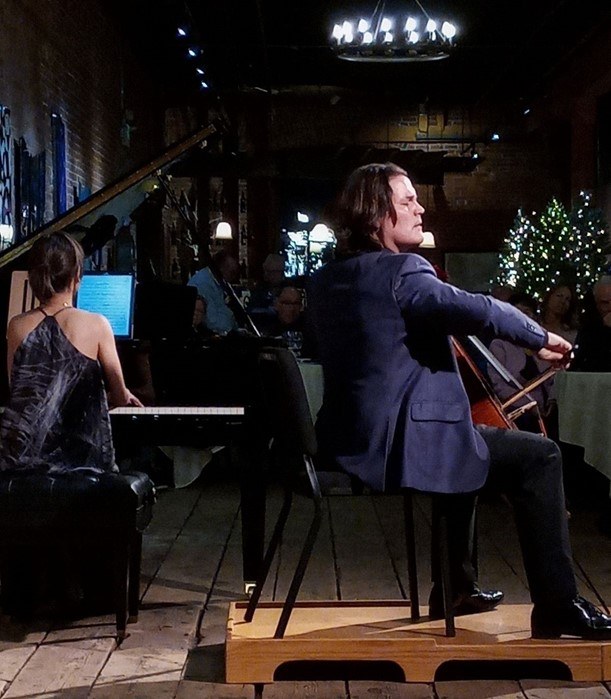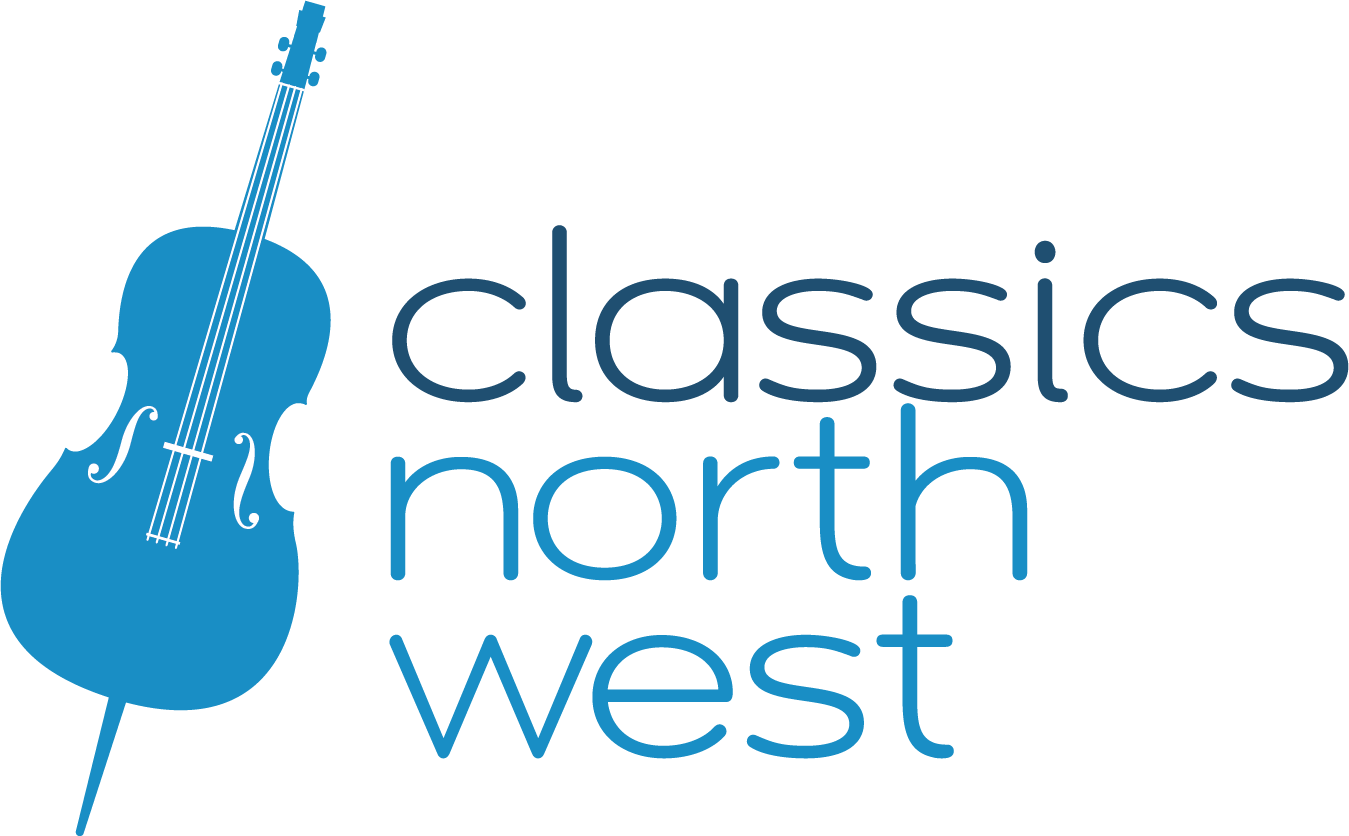Reviews
Northwest BachFest dazzles with Zuill Bailey, Helen Hwaya Kim and Jasmin Arakawa
By Larry Lapidus For The Spokesman-ReviewMarch 1, 2022
UPDATED: Thu., Dec. 16, 2021
Northwest BachFest performances were at Barrister Winery on Saturday and Sunday.
As we approach the winter solstice, we encounter a common symbol almost everywhere we look: the image of a light in darkness. We find it in the star of Bethlehem, the temple lamp burning for eight days, even in Rudolph’s nose. Last weekend in Spokane, light poured into the darkness through the windows of Barrister Winery, signaling that Zuill Bailey had touched down here to sprinkle his personal brand of stardust on the Northwest BachFest.

(Gertrude Harvey)
Bailey’s vision has always provided new glasses for old wine, and last weekend’s concerts were no exception. On Saturday night, Bailey opened a treasure trove of music that is largely neglected: adaptations of concertos in which the orchestral parts have been arranged for piano.
This was a very common practice throughout the 19th and part of the 20th century. It allowed soloists to perform concertos in cities and towns without their own orchestras, and amateurs to do the same in their own homes
Joined by two outstanding colleagues, violinist Helen Hwaya Kim and pianist Jasmin Arakawa, Bailey presented arrangements of three concertos Saturday night: The Concerto in D minor for two violins by J.S. Bach, the Cello Concerto No. 2 in E minor of Victor Herbert and the Double Concerto for Violin and Cello in A minor of Johannes Brahms.
The Double Concerto of Bach is quite understandably his best-loved concerto due to the inexhaustible inventive brilliance and energy of its outer movements and the other-worldly beauty of its central slow movement.
Assigning the second violin part to the cello and distributing the orchestral elements between the two solo voices brings every note into the foreground, allowing audiences to hear and appreciate its contribution to the whole. Hearing the two solo lines in different registers, at least when they are as sensitively performed as they were by Bailey and Kim, clarifies their interaction and increases the expressive range of the music.
Bailey and Kim have known each other since their student days, and, while studying at Juilliard, played together in a trio. Perhaps as a result of this, one was astounded throughout the program by the matching of their tone, the unanimity of their phrasing and the split-second coordination of their entries.
In his Double Concerto, Brahms makes a practice of breaking phrases of rapid notes in half and challenging the soloists to reassemble them into a seamless whole. One can compare recordings of some very famous duos attempting this feat (Heifetz-Piatigorsky and Oistrakh-Fournier) and find that they come up short of the standard set by Kim and Bailey.
Partnering Bailey and Kim was pianist Jasmin Arakawa, and the term partnering cannot be too strongly emphasized. In both the Herbert and Brahms concertos, she did far more than fill in the blanks between the solo passages. Her pianism was so extraordinary and her involvement in the musical argument so passionate that one was left wishing that orchestras could do as well.
Especially in the Brahms “Double,” she produced such a range of color and texture as to make one look about to see where the string, wind and brass players were hiding. These same virtues were on display Sunday afternoon when Arakawa sat down to perform two solo works: “Egwu Amala” from “Talking Drums” by Nigerian composer Joshua Uzoigwe (1946-2005) and Paulistana #4 and #5 by Brazilian Claudio Santoro (1919-1989).
The two works could hardly be more different; the Brazilian calling for sensual, languid lyricism, and the Nigerian demanding spiky, percussive energy along with great rhythmic flexibility. Arakawa fielded every challenge without disturbing her poise even for a moment and made the audience to feel they had drunk from the well of the composers’ inspiration.
The voltage went even higher when she was joined on the platform by Kim, who, like her accompanist, displayed mastery of every aspect of the Romantic repertory written for her instrument. From the fragile lyricism of Clara Schumann’s “Three Romances for Violin” and the smoky sensuality of Saint Saens’ “Havanaise” to the hair-raising difficulties of Pablo de Sarsate’s “Carmen Fantasie,” Kim showed all the hallmarks of the musician who first inspired her commitment to the violin: Itzhak Perlman.
Like him, she found her passionate desire to engage with an audience upon an unshakable, adamantine technique capable of reducing the most fearsome challenges to mere child’s play. Bailey has long since established his stature on the world’s stage at such a level as to make discussion of his technique always beside the point.
True, he did, joined by Arakawa, navigate the dizzying passagework of Saint Saens’ First Cello Concerto as though it were a four-finger exercise, but that is what he does: devote his unsurpassed (some would say unequalled) technical resources to revealing to his audience what is most witty, most elegant, most passionate, but always most authentic and affecting at the heart of great music.
If his ready availability to Spokane audiences makes anyone believe that his abilities are other than very significant in the history of his instrument, or in the history of musical performance in our time, they are seriously mistaken.

